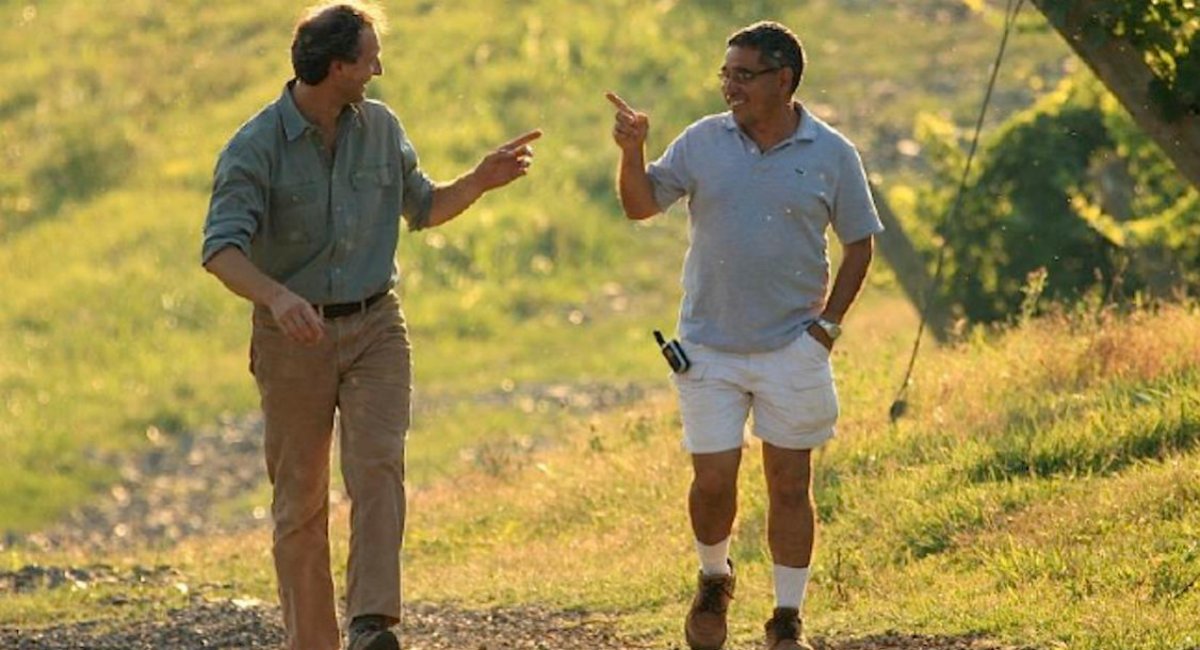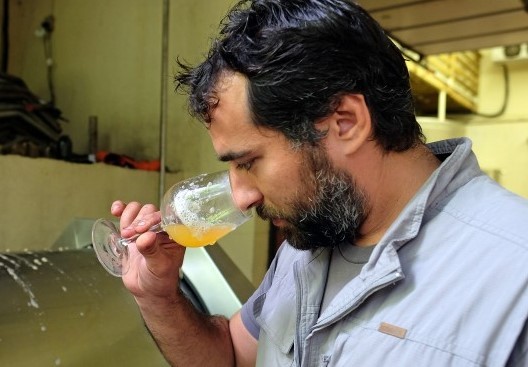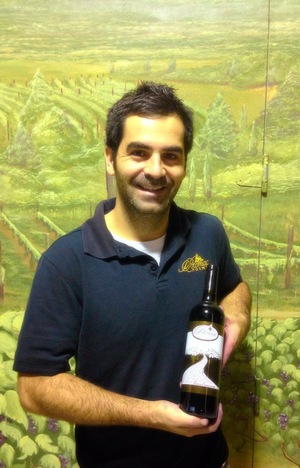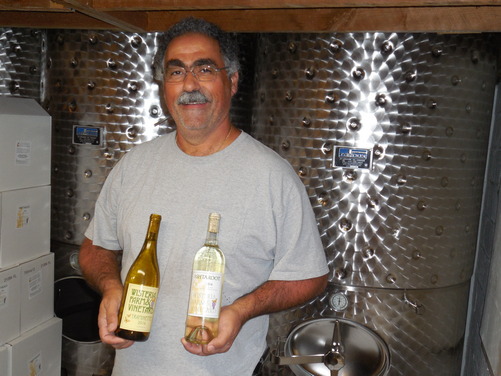Immigrants, Old World grapes, and some very American ideals
Winemaking in the New World is inclusive by nature: the endless challenges can only be met through alliance. Beetles invade, mildew overwhelms, and deer party in the vineyards like drunken sailors. When mysteries pop up and tractors break down, sometimes borrowed equipment - and shared wisdom - is the only thing that gets winemakers through a tough vintage.
At harvest time in Virginia, the potential in those yellow bins filled with Old World grapes – many once thought to be ungrowable here – is often brought to fruition by men and women who worked those same vines in Italy, France, Germany, or Greece. In their countries, many were tasting wine at the family table before they could read, and through their work on generational farms they became experts in the grapes of their regions: cabernet franc, nebbiolo, riesling. Being in Virginia, though, gives them freedom.
Dip into any region in the Commonwealth and you’ll see the cultural melting pot: at Barboursville Vineyards, winemakers from Italy work with acres of grapes native to their homeland, but even more from Bordeaux and the Loire Valley. Nearby, at Afton Mountain Vineyards, a Frenchman from Beaujolais is creating buzz with the Spanish grape, albariño. In Northern Virginia, a Spaniard at Potomac Point Winery makes wine from the Spanish tempranillo, but also anchors one of his popular red blends with the Tuscan grape, sangiovese.
Virginia has its own native grapes, too, like Norton -- which is made into sparkling wine by the daughter of the Brazilian owner at Casanel Vineyards. And some wineries favor hybrid grapes, like the Cayuga White that German-born Warner Hambsch will pour for you at his Loving Cup Winery near Charlottesville, and the tannic Carmine, grown in the Shenandoah Valley at Wisteria Vineyard by a winemaker from Lebanon.
Scores of winery owners, growers and winemakers have made their way to Virginia’s wine country over the last 40 years, by design or happenstance. Some, like Barboursville Vineyards' master grower, Fernando Franco, fled danger - in his case, rebel militias in El Salvador. Others, like Damien Blanchon of Afton Mountain Vineyards, came to learn for a couple of harvest cycles and never went home -- the challenges of a new wine region were too alluring.
Today, Franco grows French sauvignon blanc alongside Italian vermentino, and Blanchon blends sangiovese with petit verdot and tannat, while in the tasting room, the customers are happy to give these new-to-them tastes a try. They love the unique flavors, and the blends, and though some of the names may be hard to pronounce, this way of making wine makes perfect sense to them.

Winemaker Luca Paschina and Vineyard Manager Fernando Franco, Barboursville Vineyards

Winemaker Damien Blanchon, Afton Mountain Vineyards

David Pagan Castano, Potomac Point Winery

Nelson DeSouza and friend, Casanel Vineyards
Andrew%20Shurtleff.jpg)
Warner Hambsch, Loving Cup Winery (c) Andrew Shurtleff

Moussa Ishak, Wisteria Vineyard
Slater Run Vineyards photo: Katell Griaud (Winemaker, France), Francisco Rivas (Vineyards Mgr, El Salvador), Chris Patusky (Co-Owner, Connecticut)
Winemaking in the New World is inclusive by nature: the endless challenges can only be met through alliance. Beetles invade, mildew overwhelms, and deer party in the vineyards like drunken sailors. When mysteries pop up and tractors break down, sometimes borrowed equipment - and shared wisdom - is the only thing that gets winemakers through a tough vintage.
At harvest time in Virginia, the potential in those yellow bins filled with Old World grapes – many once thought to be ungrowable here – is often brought to fruition by men and women who worked those same vines in Italy, France, Germany, or Greece. In their countries, many were tasting wine at the family table before they could read, and through their work on generational farms they became experts in the grapes of their regions: cabernet franc, nebbiolo, riesling. Being in Virginia, though, gives them freedom.
Dip into any region in the Commonwealth and you’ll see the cultural melting pot: at Barboursville Vineyards, winemakers from Italy work with acres of grapes native to their homeland, but even more from Bordeaux and the Loire Valley. Nearby, at Afton Mountain Vineyards, a Frenchman from Beaujolais is creating buzz with the Spanish grape, albariño. In Northern Virginia, a Spaniard at Potomac Point Winery makes wine from the Spanish tempranillo, but also anchors one of his popular red blends with the Tuscan grape, sangiovese.
Virginia has its own native grapes, too, like Norton -- which is made into sparkling wine by the daughter of the Brazilian owner at Casanel Vineyards. And some wineries favor hybrid grapes, like the Cayuga White that German-born Warner Hambsch will pour for you at his Loving Cup Winery near Charlottesville, and the tannic Carmine, grown in the Shenandoah Valley at Wisteria Vineyard by a winemaker from Lebanon.
Scores of winery owners, growers and winemakers have made their way to Virginia’s wine country over the last 40 years, by design or happenstance. Some, like Barboursville Vineyards' master grower, Fernando Franco, fled danger - in his case, rebel militias in El Salvador. Others, like Damien Blanchon of Afton Mountain Vineyards, came to learn for a couple of harvest cycles and never went home -- the challenges of a new wine region were too alluring.
Today, Franco grows French sauvignon blanc alongside Italian vermentino, and Blanchon blends sangiovese with petit verdot and tannat, while in the tasting room, the customers are happy to give these new-to-them tastes a try. They love the unique flavors, and the blends, and though some of the names may be hard to pronounce, this way of making wine makes perfect sense to them.

Winemaker Luca Paschina and Vineyard Manager Fernando Franco, Barboursville Vineyards

Winemaker Damien Blanchon, Afton Mountain Vineyards

David Pagan Castano, Potomac Point Winery

Nelson DeSouza and friend, Casanel Vineyards
Andrew%20Shurtleff.jpg)
Warner Hambsch, Loving Cup Winery (c) Andrew Shurtleff

Moussa Ishak, Wisteria Vineyard
Slater Run Vineyards photo: Katell Griaud (Winemaker, France), Francisco Rivas (Vineyards Mgr, El Salvador), Chris Patusky (Co-Owner, Connecticut)


Please Login to leave a comment.